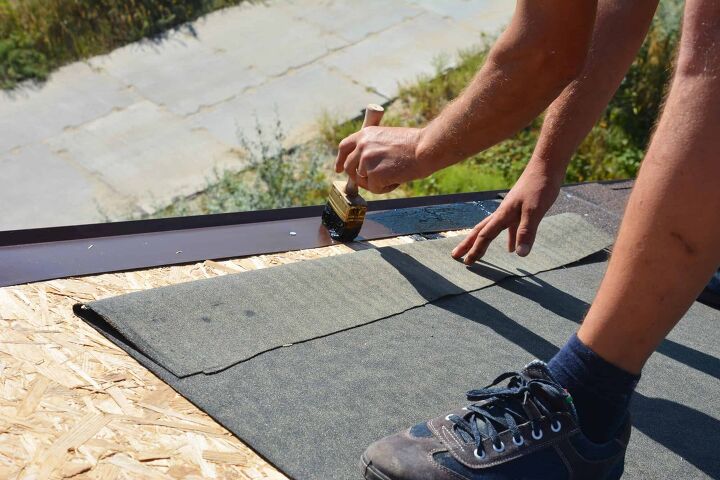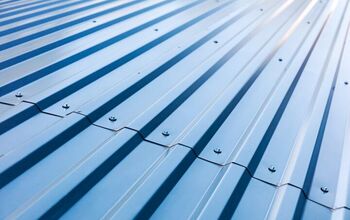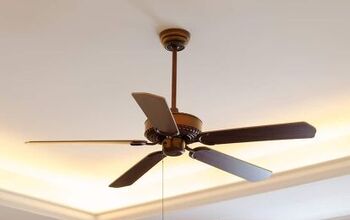How Long Does Tile Roof Underlayment Last?

A tile roof can be the perfect solution for homes in harsh climates. Tiles are popular choices for roofs due to their ability to hold up well to extreme elements. As a result, it is common to see tile roofs in areas known for difficult weather conditions.
Tile roof underlayment lasts for 10 to 30 years depending on the materials, weather, and other conditions. Asphalt felt underlayment lasts 20 to 30 years, with rubberized versions lasting 25 years or more. Debris damage, pests, extreme hot or cold, heavy rain, hail, and snow can reduce the lifespan. A leaky roof can indicate a damaged or failing tile roof underlayment.
Do You Need Tile Roofing Installation or Replacement?
Get free, zero-commitment quotes from pro contractors near you.

What Exactly Is A Tile Roof Underlayment?
When you look at a tile roof, one of the first things that probably comes to mind is how strong it looks. The roof tiles, whether they are made from concrete or any other material, leave an impression of lifelong durability.
While tiles are certainly resilient, they are not the source of your roof’s protective nature. What’s actually keeping the elements out of your home is the underlayment that lies beneath the roof tiles. Underlayment is a protective layer that goes under roof tiles. It is a weatherproof material that protects the structure below.
The industry standard for tile roofing necessitates that one or two layers of underlayment be installed on roofs with slopes that are 33 percent or greater. Although the tiles are the primary line of defense against leaking, the underlayment is a very important additional barrier.
Types Of Roof Underlayment
In older homes, roof tile underlayment is generally made from felt, while in newer projects is more common to find underlayment made from synthetic materials, tar, rubber, and combinations of each.
30 pound felt paper is the most common tile underlayment found in homes older than 20 years. Also called asphalt-saturated felt, felt paper used to be the industry standard. Today, when felt is used, contractors generally opt for 40-pound felt.
There are also several synthetic underlayment products that are far more durable than felt. Synthetic roof tile underlayment has many benefits over traditional felt underlayment and is the most popular choice for builders nowadays. Not only is it far more durable but it is also far better at providing a weather-tight seal, better tear resistance, and ensuring edge-to-edge protection for years to come.
Rubberized asphalt is the most expensive tile underlayment option as it consists of more asphalt and various rubber polymers. This gives it the quality of being entirely waterproof.
How Long Does Tile Roof Underlayment Last?
Fortunately, your tile roof underlayment does a lot more than just your shingles to protect your home in virtually every type of climate. It gives it the ability to withstand many adverse weather conditions.
Depending on the particular weather and climate of your area, along with other factors, your tile roof underlayment could last 25 years or more. However, it should still be inspected on a regular basis to ensure that it is functioning as it should.
Factors That Shorten the Lifespan of Roof Underlayment
Whether it is felt roof tile underlayment or synthetic, there are some factors that affect the lifespan of roof tile underlayment. It should also be said that within the felt and synthetic categories there are also several different types of roof tile underlayment.
Quality Matters
Roof underlayment types that are of the highest quality will fare better than those of low quality, no matter which category they come from. However, underlayment made from rubberized asphalt is certainly the most resilient form of roof underlayment there is.
Mind the Elements
Some of the most common factors that can degrade underlayment include extreme temperatures, moisture, organic compounds, and improper installation.
When underlayment is not maintained regularly, many small problems go unnoticed for years. When this happens, problems that should be small weekend DIY tasks turn into major projects requiring significant investment.
Identify Issues And Weak Points In Roof Underlayment
Whether your roof has tiles or shingles, identifying issues and weak points in roof underlayment is your first line of defense.
The first thing that you should do is ensure that there are no leaks. A leak is a sure sign there is a hole or tear in the roof underlayment. Beyond leaks, however, there are also some other areas that require continual attention ever the years.
Build-up of any kind should be avoided on a tile roof. Whether it is leaves, moss, or any other organic material, there is decay that occurs with these types of materials that can negatively impact the underlayment.
It is also wise to check the state of any channel metals that are present, the hip and ridge closures and flashing. Most of these can be checked superficially during regular cleanings. If something seems amiss it probably is.
Roof Underlayment Repair: DIY Or Professional
When is it a good idea to fix your roof underlayment by yourself? The answer to that question is dependent on the skill level of the DIY’er as well as the complexity of the problem.
When damage is limited, it is certainly possible to patch holes and tears in the underlayment. There are many great products available that can help you fix underlayment with the same level of effectiveness that a professional can.
Where things get a little more complicated, however, is when you are unsure about the extent of the damage. A professional can usually help identify problems with tile roof underlayment that many could overlook. Professionals can also tell if more problems are likely to surface due to the state of the tile roof and underlayment.
In short, if you are sure about the scope of the project, repairing roof underlayment is a project that can be tackled over a weekend. Just remember to exercise proper safety practices while repairing the underlayment.
Cost Of Repairing Roof Underlayment
There are many factors that can affect the cost of roof underlayment repair.
One of the first things roofers check during an estimate is the condition of the underlayment. Sometimes, underlayment only requires a simple patch. Other times, roofers can cover the existing underlayment with a new layer. Still other times, you will need to replace the entire underlayment.
Another factor that goes into the cost of an underlayment repair is how much repair the roof underlayment needs. Roofing prices depend partly on square footage. If repairing a small section of the roof, it will cost considerably less than replacing the entire roof underlayment.
Other factors that have an impact on the cost of an underlayment repair are the complexity of the roof, the materials, the quality of any new underlayment you purchase, and tile replacement. Depending on a variety of factors, you can expect to pay from $300 to $600 per square foot for a professional job.
How Long Do Tile Roofs Last?
When we speak of tile roofs, the term could mean anything from concrete and cement to terracotta tile roofs, or synthetic tiles to slate stone. Although common, tile roofing tends to be one of the most expensive roofing options. With that being said, the associated advantages make the upfront costs completely worthwhile.
The most prevalent advantage to tile roofs is their lifespan. On average, a well-cared-for and well-maintained tile roof can last 50 years or more. In fact, there are buildings across Europe with tile roofs that have endured for centuries. When compared to other roofing materials, tile outlasts all for longevity.
Although the tiles themselves can last for decades, the underlayment will wear out first. To maintain your entire roof system, you must replace your underlayment when necessary.
How Much Life Is Left In My Old Tile Roof?
If you have a roof with tiles that haven’t been replaced in over a quarter of a century, you need to have it looked at by a qualified professional. A roofing expert will be able to tell you how much life remains in your current roof and work with you to establish a new roofing plan.
In most cases and if you’re using the old tile, you’ll need to reset new flashing and install a quality underlayment. However, if your tile style is no longer available, you may have to consider entirely new tiling. Regardless, you should consider making plans for a full replacement within five years, based on the condition.
Do You Need Tile Roofing Installation or Replacement?
Get free, zero-commitment quotes from pro contractors near you.

Related Questions
What is the best underlayment for a tile roof?
The best type of underlayment for a tile roof depends on the type of tiles you’re installing. Newer underlayment materials that rely on synthetics, however, are superior in almost every way to traditional underlayment types. Older roof underlayment consists of felt and breaks down faster than synthetic underlayment.
When should you replace a tile roof?
The life of a tile roof can vary quite widely, depending on a variety of factors. When properly cared for and monitored regularly, a tile roof can last nearly 50 years. That said, tile roofs that are either installed incorrectly or not maintained can last as few as 5-7 years. Tile roofs should be replaced when repairs are not a viable solution.

Benjamin is a proud homeowner who loves to write about DIY projects and home improvement projects. Traveling, perfecting his home, and spending time with his family are just a few of the many things that keep him inspired.
More by Benjamin Wright













![Finishing Basement Without Permit [Is It Really Illegal?]](https://cdn-fastly.upgradedhome.com/media/2023/07/31/9070078/finishing-basement-without-permit-is-it-really-illegal.jpg?size=350x220)


![How To Reset A Whirlpool Cabrio Washer [In 5 Easy Steps!]](https://cdn-fastly.upgradedhome.com/media/2023/07/31/9076531/how-to-reset-a-whirlpool-cabrio-washer-in-5-easy-steps.jpg?size=350x220)








![12 Washing Machine Brands to Avoid [with Recall Data]](https://cdn-fastly.upgradedhome.com/media/2023/07/31/9075781/12-washing-machine-brands-to-avoid-with-recall-data.jpg?size=350x220)

